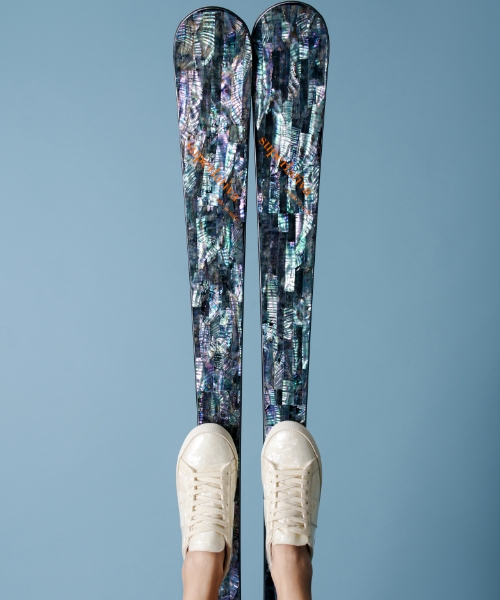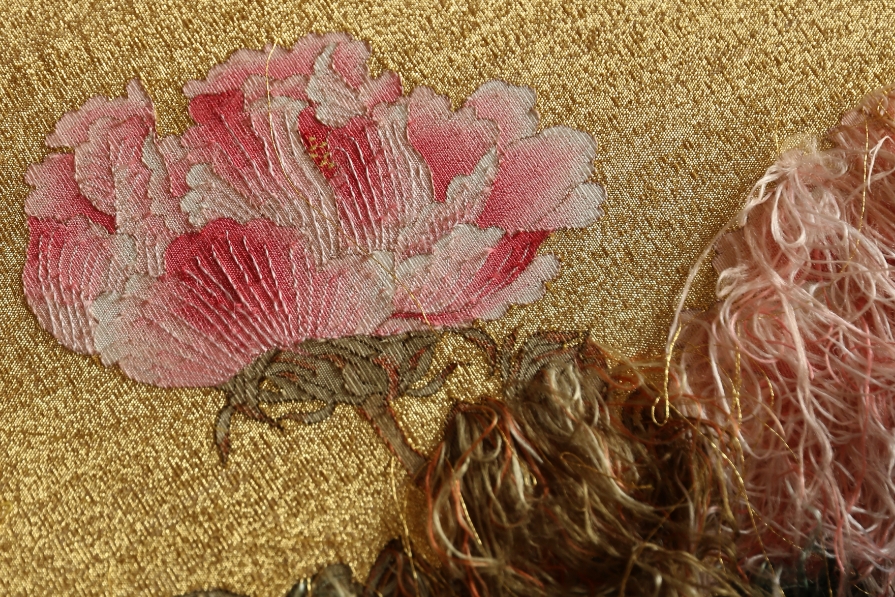Visions Episode 2 : Savoir-faire: A Precious Resource for Innovation The - Première Vision Paris - Denim Première Vision - Première Vision New York

Visions is a series of forward-looking articles that explores the world of tomorrow — its contours, models, and challenges. Through the eyes of experts from various fields, the Visions series undertakes an exploration of our societies, adopting multiple viewpoints to address several questions: How can we imagine the future today? What emerging trends or subtle signals should we pay attention to identify and anticipate new models and ways of living, creating, producing, and consuming? By gathering observations, analyses, and future-oriented insights in fields ranging from multidisciplinary creation to economics, sustainability, and new technologies, Première Vision aims to inform, inspire and provide key resources for creative Fashion professionals.
An integral part of creativity, savoir-faire—the central theme of the February 2025 edition of Première Vision—captivates as the beating heart of the fashion ecosystem.
In the luxury sector, where craftsmanship is meticulously safeguarded as a symbol of excellence, it is also winning over a broader audience. Increasingly drawn to the essence of materials, consumers are exhibiting a growing desire to create. The DIY trend, shared on social media as a celebration of artisanal creativity, has expanded beyond knitting workshops to embrace ceramics and embroidery.
To highlight the scope of the handmade movement, Sandrine Pannetier—who led the trend forecasting and creative agency LeherpeurParis for 15 years before going independent—conducted a study entitled “The Grand Inventory of Craft and Textile Know-How.” Through an in-depth analysis of existing artisanal skills, she demonstrates how weak signals of change are transforming into strong trends, highlighting the richness and diversity of the thriving Craft and handmade culture.

Indicators of Craftsmanship’s Rising Popularity
Luxury brands have consistently championed the outstanding skills of their artisans and play a key role in driving visibility. Pannetier cites some key examples
“The recent appointment of Matthieu Blazy as creative director of Chanel, replacing Virginie Viard, is a step in this direction, since in his previous position at Bottega Veneta, he took care to protect the brand’s signature braided leather technique while injecting innovation,” she says, explaining how Chanel and the LVMH group, through the creation of their “temples to the hand” — respectively 19M and La Main-LVMH Métiers d’art — have also worked to raise the profile of artisanal gestures and techniques. “The houses organize dedicated fashion shows, while museums host major exhibitions dedicated to the theme, like the Grand Palais with the “Du Coeur à la Main” exhibition on the creativity and expertise of the Italian House Dolce & Gabbana,” adds Pannetier. “Prizes are also awarded in recognition of savoir-faire, such as the LOEWE FOUNDATION Craft Prize in the luxury sector or the Sessùn Craft Prize.”

Contemporary art, which is often seen as a precursor to future trends, serves as another essential source of inspiration: it’s no coincidence that the aforementioned LOEWE FOUNDATION Craft Prize is showcased at the Palais de Tokyo. Among artists “generating strong interest,” theauthor of the study cites Chloé Bensahel and Cathryn Boch well as Olga de Amaral, who has garnered rave reviews for her retrospective currently showing at the Fondation Cartier in Paris.
“Craft artists and fiber artists were also prominently featured at the latest Venice Biennale,” observes Pannetier. The trend is also mirrored on social networks, embodied by artists and a new generation of galleries, such as Amelie, Maison d’art with Sandrine Torredemer and the Baró Galeria with Sylvia Sánchez Montoya.
Meanwhile, the boundaries between professions are blurring. Among the “practitioners,” as Pannetier calls them, distinctions between artists, artisans, designers, resilient industrialists, and manufacturers are becoming increasingly fluid.
The resurgence of craftsmanship during periods of crisis is a recurring pattern throughout history.
“In the long term,” explains historian and sociologist Hugues Jaquet, “we see that every time crises arise—whether social, economic, or environmental, such as at the end of the 19th century, during the interwar period, or following the oil shock—savoir-faire resurfaces in response to these realities. It’s as if society revives these values because they embody a way of living and a sense of togetherness.” Pannetier, who has studied this ecosystem in detail, highlights a paradox.
Sandrine Pannetier
Pannetier, who has studied this ecosystem in detail, highlights a paradox. “This surge in interest is simultaneously accompanied by a decline in textile culture,” she notes. This trend seems to be fairly widespread, as teachers and a number of professionals have noted. The delocalization of production, and the fragmentation of the value chain across thousands of kilometers, have largely contributed to this loss of knowledge.
The Unsustainable Pursuit of Excess (Over-Production, Over-Consumption…)
Growing awareness of the consequences of globalisation, over-industrialisation and the culture of excess, has led to a renewed interest in savoir-faire.
The value of manual work, time-intensive processes and high-quality materials carries more significance, especially as France has outsourced its production thousands of kilometers away to maximize profits and cut costs. The ultra-fast-fashion system is the most visible symptom of this, but behind this lies the loss of machines, skills and techniques, which we have been striving to recover, particularly since the Covid crisis.
Increasingly Curious Consumers
In this context, new lifestyles have emerged, questioning the ‘hows’ of the process, from the raw materials to the finished products. Much like the transformation seen in the food sector, this movement emphasises local production, strengthens regional identity, and favors smaller-scale operations and short distribution networks.
A wave of commitment has swept through the entire ecosystem, impacting various players along the value chain, from farmers and producers to breeders, small-scale manufacturers, designers, and makers. A growing focus on natural fibers like flax, hemp, and wool highlights a renewed relationship with nature and a deep appreciation for hand craftsmanship. Transparency is becoming a priority, tracing the journey from the harvesting of seeds to the finished product. This has led to fascinating and promising advancements that combine innovation with tradition.

Creative and Committed Networks
The public’s growing interest in savoir-faire and the traceability of fashion items also aligns with a stronger commitment from industry professionals—especially those who could be seen as “activists.”
“The positive pressure exerted by media outlets such as Victoire Satto’s The Good Goods or the Loom association, helps to document these issues. They also serve as role models in conferences and within the economic and political fields.”
Sandrine Pannetier
Behind the greater media coverage of these subjects are people, media, and federations like the Circular Fashion Federation. We can no longer describe the engagement of these actors as faint signals—they are strong and clear. They embody and unite the growing desire to create a different approach to the ‘hows’ of the system.
New Players and New Registers

Across the industry, there is a clear desire to build something different, championed by a new generation of “labartisans,” a term coined by Pannetier, referring to artisans who work hand in hand with researchers. Their work offers us a vision of what future production might look like. This stands in stark contrast to the “Gepetto syndrome,” as vividly outlined by Grégoire Talon, which romanticizes the image of the artisan working solo in a workshop, bathed in soft, golden light. These new players, whether designers/researchers, start-ups or industrialists—such as Tony Jouanneau (dyeing processes using micro-algae), Eastman, Superlativa (which transforms by-products from the pearl farming industry), or Spiber (which is advancing toward industrial production of its protein fiber derived from biomass fermentation)—are embracing 3D technology, laser cutting, artificial intelligence, biomimicry, and microbiology. They are the ones opening the door to what could be one of the paths for tomorrow’s system.
Likewise, a new generation of entrepreneurs, some part of the Incubator of the Institut Français de la Mode (IFM), is pushing the boundaries of material innovation. Young women are taking the lead, with a closer connection to nature. In response to the growing concerns about the toxicity of certain clothing, Imane Do Vale launched the lingerie brand Nissé, which offers designs made from sustainable materials such as castor bean fiber. Lora Sonney, who gained recognition at the Hyères Festival, scooping the Ami x IFM Entrepreneurship Award for her eponymous ready-to-wear label, has developed her own material made from previously non-recycled irrigation hoses, giving it a coated canvas-like finish.
On the whole, creative fields are opening up in all their diversity. In her study, Pannetier paints a picture of these evolving and reinvented areas of savoir-faire: from the ancestral embroidery skills of Lesage, which collaborates with artists to bring fresh energy, to Robert Mercier, a creator and artist in constant transformation, always pushing new directions. This also includes players in the craft world who work with raw materials, different gestures, and territories; artisans who work with technology, as well as a new generation of designers who, with joy and a strong aesthetic vision, approach recycling as a valuable new resource, like Aurélia Leblanc and Mathilde Hiron.

handbag ©Mathilde Hiron
Across diverse fields, by reworking traditional techniques, they are constantly reshaping the idea of savoir-faire through a dynamic and vibrant approach. Science backs their initiatives.
Innovation Across the Entire Value Chain
Despite the energy crisis and the repayment of state-backed loans (PGE), resilient manufacturers are also taking action upstream by adapting their expertise to ecological challenges and nurturing their regional heritage, as seen with the lace manufacturer Solstiss.

In terms of pedagogy and the preservation of traditional techniques, digital tools enable more visual archiving. Researcher Alina Glushkova is working on a European project focused on preserving these skills through video capture technology. These tools will become increasingly important in the future for preserving and sharing knowledge. As a coach in the IFM accelerator for African designers, Glushkova points out that the ecological imperative leaves no room for choice today: production methods need to be rethought, while also deepening our understanding of the hidden aspects of garment production. For Glushkova, it’s no coincidence that the 2023 Venice Architecture Biennale chose “Africa, Laboratory of the Future” as its theme. The answers can also be found in the savoir-faire of this continent. The exploration takes place with a far-reaching, global outlook.
The emergence of new ways of doing things is in motion, and the question now is how to translate this aspiration into sales in a context of price pressure. Information is key. It is essential to explain the value behind the prices to consumers and professionals alike. To achieve this requires rethinking formats and utilising video and social media to infuse emotion into technical gestures. Additionally, it is important to restore the precision and depth of the language surrounding these crafts, being specific about materials, trades, and techniques.
The most important thing is that the younger generations are already listening and receptive. These gestures and new visions have already left an impression on their retinas and aroused their curiosity. On TikTok, the hashtag #savoir-faire has reached almost 450 million views since its launch. The valorization process has begun. We are at the beginning of a long chapter of reinvention.
